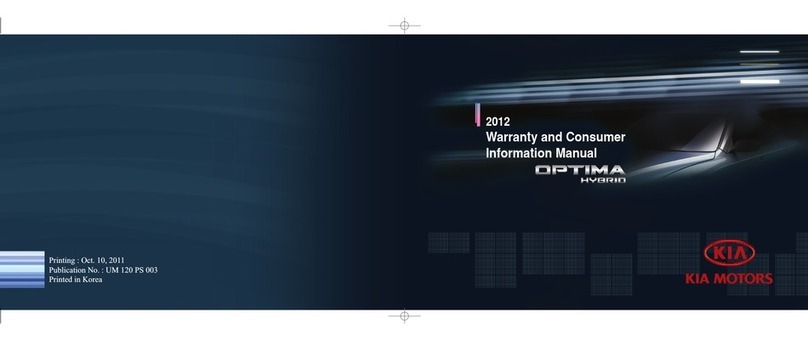
1. IDENTIFICATION / RECOGNITION
Initial Response: Identify,
Immobilize and Disable
The following procedures should be used
whenever you are dealing with a EV9 at an
emergency scene. However, all operations
should be consistent with your
department’s standard operating
procedures, guidelines, and any applicable
laws. When an EV9 is damaged in a crash,
the high-voltage safety systems may have
been compromised and present a potential
high-voltage electrical shock hazard.
Exercise caution and wear appropriate
personal protective equipment (PPE)
safety gear, including high-voltage safety
gloves and boots. Remove all metallic
jewelry, including watches and rings.
WARNING
Identify
The EV9 is an electric vehicle. Emergency
responders should respond to emergency
scenarios involving the EV9 accordingly,
exercising extreme care and caution to
avoid contact with the high-voltage system
within the vehicle.
Identifying a Kia EV9
“EV9” Car name emblem on tailgate
• The EV9 can be easily identified by the
car name emblem attached on the tailgate
on the left side.
•The car name emblem may be missing or
hidden after a crash due to damage to the
vehicle. Always be sure to use other
identification methods in this section before
determining that the vehicle is not an
electric car.
Charging Port
The charging port is located on the rear
left side.
Note that the doors must be unlocked
to open the charge port door.
How to open the charging port
1. Press the unlock door button,
depress the brake pedal and apply the
Electric Parking Brake (EPB).
2. Turn OFF all switches, move the shift
lever to P (Park) and turn off the vehicle.
3. Open the charging door by pressing
it, or press the “charging door open
button” in the crash pad.
Kia EV9
Emergency Response Guide
3



















































